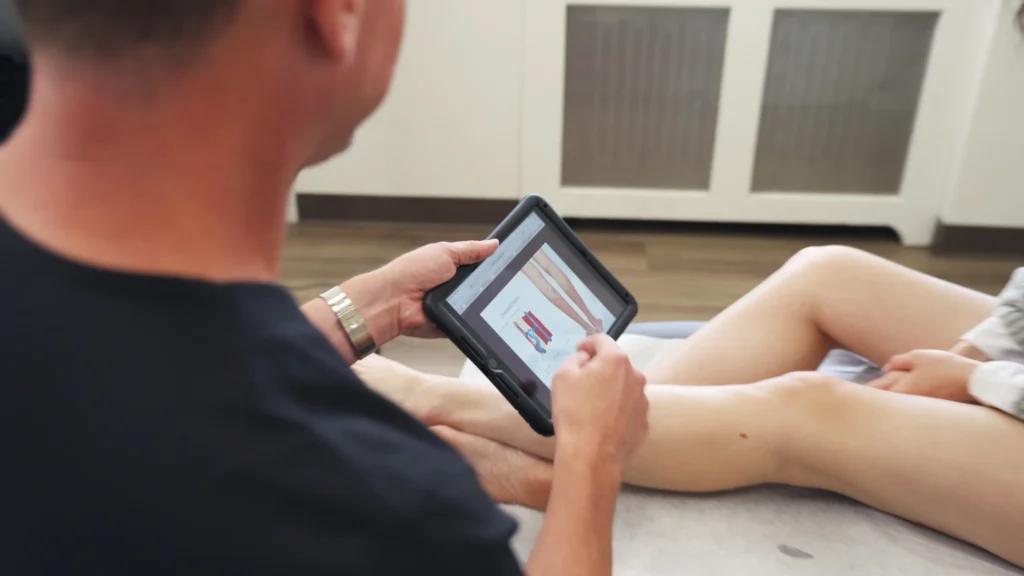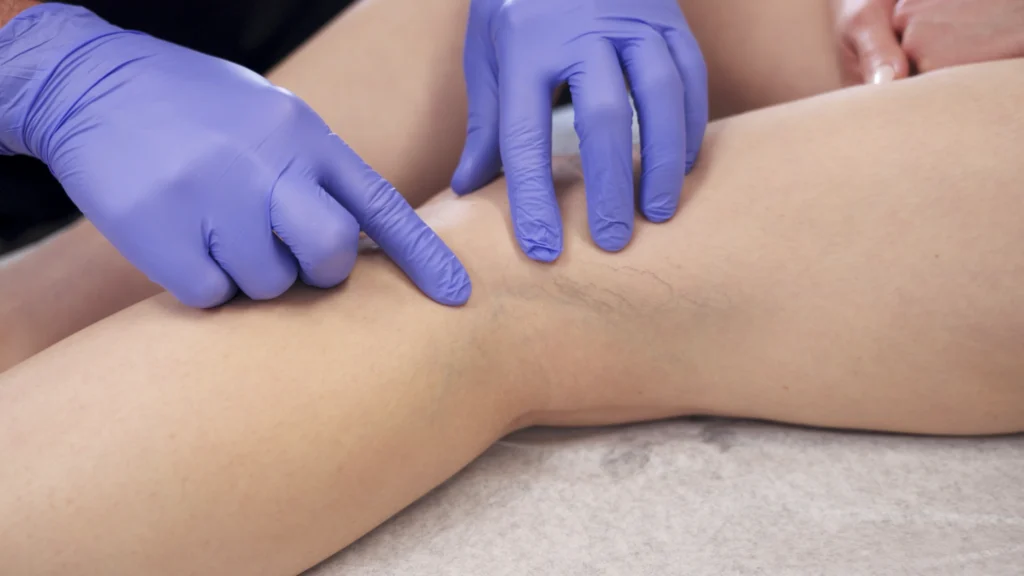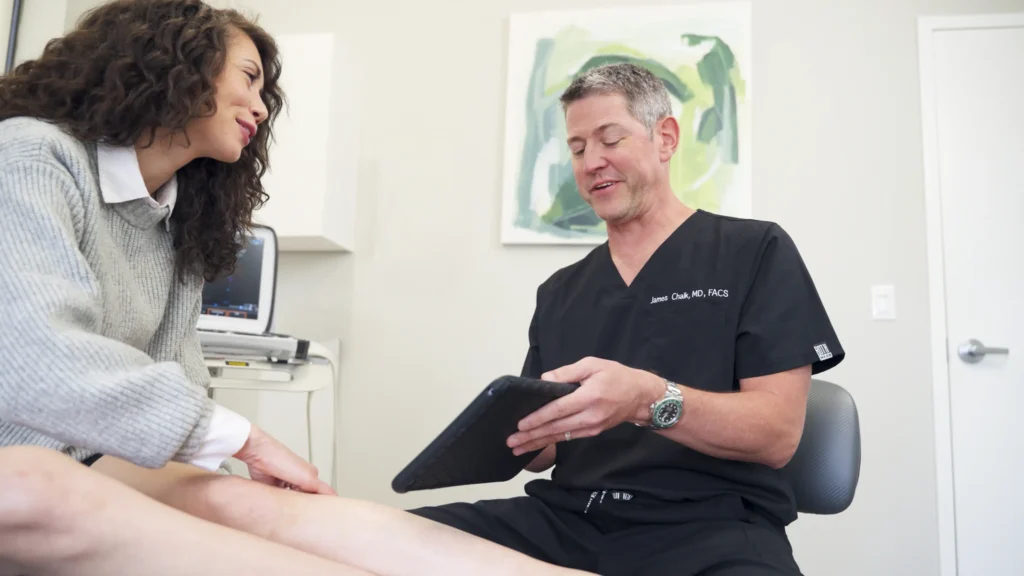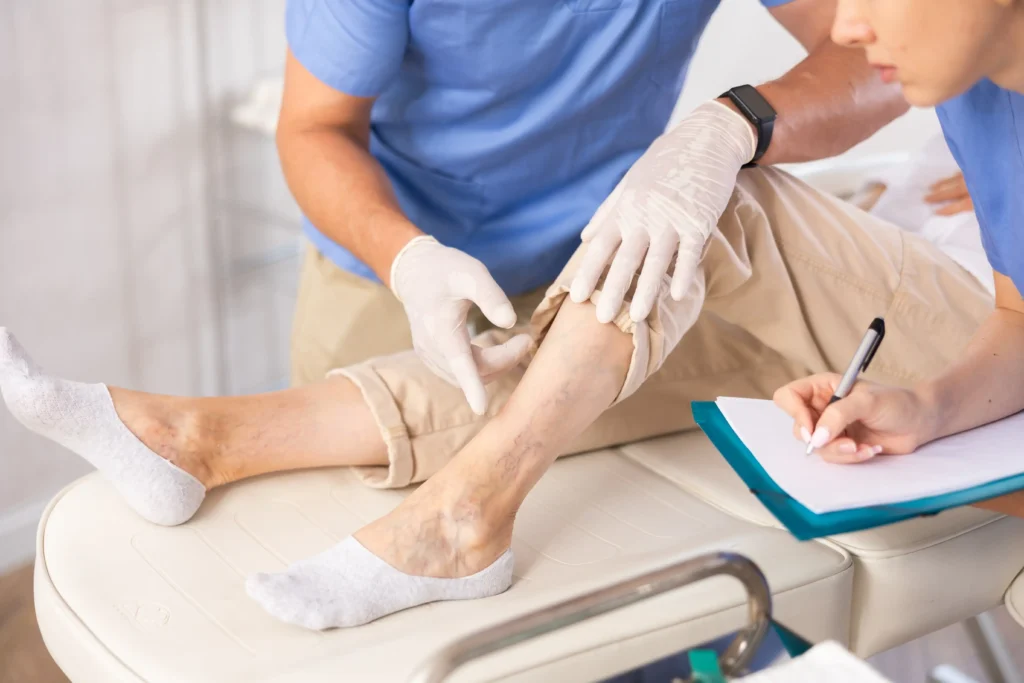Spider Veins vs. Varicose Veins: What Are the Differences?
You’re preparing for an outdoor event, only to notice clusters of visible veins on your legs. These veins, known as spider veins or varicose veins, can affect both appearance and comfort, potentially causing discomfort. While you might assume these veins are the same, they differ in appearance, causes, and treatment approaches.
At Vein Treatment, we offer comprehensive, minimally invasive vein treatments tailored to treat both spider veins and varicose veins. Our board-certified vein doctors specialize in diagnosing the root cause of vein conditions. Understanding the differences between spider veins and varicose veins is essential to making informed decisions about vein health. This guide will walk you through the distinctions and treatment options available at our vein clinic.
Appearance: How Spider Veins and Varicose Veins Look
One of the most noticeable differences between spider veins and varicose veins is their appearance. Spider veins are small, thin, and web-like, often appearing red, blue, or purple on the skin’s surface. They usually form on the legs or face and look like fine lines or a spider’s web, hence the name.
Varicose veins, on the other hand, are larger, bulging veins that appear twisted or rope-like. They’re often blue or dark purple and can protrude from the skin, creating visible lumps. This difference in appearance is a key indicator of which vein condition you’re dealing with. If you’re unsure, visiting a vein treatment clinic can help clarify your condition.
Location: Where Spider Veins and Varicose Veins Develop
Although both types of veins are more common in the legs due to pressure from standing or walking, spider veins and varicose veins develop in slightly different areas. Spider veins often appear close to the surface of the skin, primarily around the thighs, calves, ankles, and sometimes the face.
Varicose veins tend to develop deeper in the legs, where blood flow must work against gravity to return to the heart. This pressure can cause veins to become stretched and distorted over time, especially in the legs. Contact us to schedule a consultation with a vein specialist to better understand which veins are affected.
Cause: What Causes Spider Veins and Varicose Veins?
Both spider veins and varicose veins share a common underlying cause – venous insufficiency. When valves within veins become weakened or damaged, blood may pool, leading to swollen, visible veins. However, specific triggers differ between the two.
Spider veins can sometimes be purely cosmetic and only triggered by prolonged sitting or standing, sun exposure, hormonal fluctuations, or injury. Varicose veins are almost always associated with venous insufficiency and may develop due to prolonged pressure, genetics, and age. The underlying condition of venous insufficiency is key to understanding both conditions.
At Vein Treatment, our doctors use duplex ultrasound to accurately diagnose venous insufficiency, which is critical for creating a personalized treatment plan. By addressing the root cause, you can achieve lasting relief for both spider and varicose veins.
Symptoms: Varicose Vein Pain vs. Spider Vein Discomfort
While spider veins are primarily a cosmetic concern, some individuals may experience mild discomfort, itching, or tingling around the affected area. Generally, spider veins do not cause significant physical symptoms.
Varicose veins, however, can cause aching varicose vein pain, leg heaviness, swelling, and discomfort, especially after prolonged periods of standing or sitting. You might also notice skin discoloration or ulcerations if left untreated. For individuals dealing with varicose vein pain, our minimally invasive varicose veins treatments offer effective relief.
Health Risks: Are Spider Veins or Varicose Veins More Concerning?
Spider veins rarely pose significant health risks, although their appearance can be a source of frustration. However, in some cases, spider veins may be symptomatic of chronic venous insufficiency, which is a medical condition and requires prompt treatment.
On the other hand, varicose veins may lead to complications if untreated. For instance, varicose veins can increase the risk of blood clots, deep vein thrombosis, or skin ulcers in severe cases. Addressing varicose veins early with professional treatment can prevent these issues.
Vein Treatment: How to Remove Spider Veins vs. How to Treat Varicose Veins
When considering how to remove spider veins or how to treat varicose veins, you have several options. Spider veins respond well to sclerotherapy, a procedure where a special solution is injected into the veins, causing them to collapse and fade. Laser treatments can also be used for smaller spider veins, particularly on the face, but we don’t highly recommend laser therapy for spider veins because it’s not very effective.
For varicose veins, treatment options include endovenous laser ablation, radiofrequency ablation, and VenaSeal (a medical adhesive that seals the vein). These treatments target the underlying venous insufficiency, eliminating the problematic vein and redirecting blood flow to healthier veins. To learn about our vein center and the vein treatments available, contact Vein Treatment for a personalized plan.
Insurance Coverage: Does Insurance Cover Vein Treatments?
Most vein treatments are covered by medical insurance if they’re deemed medically necessary. Since varicose veins often result from venous insufficiency, treatment is typically covered. Although spider veins are usually considered cosmetic, treating the root cause may also be covered by insurance if diagnosed with venous insufficiency. Contact us to request insurance verification before your first appointment at one of our vein treatment clinics.
FAQs: Common Questions About Spider Veins and Varicose Veins
What causes spider veins?
What causes spider veins? Spider veins result from weakened vein valves, often due to prolonged standing, hormonal changes, sun exposure, or genetics.
What is venous insufficiency?
What is venous insufficiency? Venous insufficiency is when veins struggle to circulate blood back to the heart, leading to blood pooling and the development of varicose and spider veins.
How to remove spider veins?
How to remove spider veins? Spider veins can be effectively removed with sclerotherapy or laser treatments. At Vein Treatment, we offer these minimally invasive spider vein treatments to help you achieve smoother, healthier skin.
How to treat varicose veins?
How to treat varicose veins? Varicose veins treatments include procedures like endovenous laser ablation, radiofrequency ablation, and VenaSeal. These methods address the root cause, ensuring long-lasting relief from symptoms.
Are vein treatments covered by insurance?
Are vein treatments covered by insurance? Yes, most treatments for varicose veins are covered by insurance if they’re medically necessary. Treatments for the underlying venous insufficiency of spider veins may also be covered. Visit your vein clinic to learn about coverage options.
Can untreated varicose veins lead to complications?
Yes, untreated varicose veins may lead to blood clots, deep vein thrombosis, or ulcers. Prompt treatment helps prevent these issues.
Is vein treatment painful?
Most minimally invasive treatments cause minimal discomfort. Our vein specialists prioritize patient comfort throughout the process.
By understanding the distinctions between spider veins vs. varicose veins, you can make informed decisions about your vein health. Vein Treatment offers advanced solutions at state-of-the-art locations across New York, Long Island, California, Maryland, and New Jersey. Whether you’re managing spider veins or looking to relieve varicose vein pain, our team is here to help you achieve lasting results.








